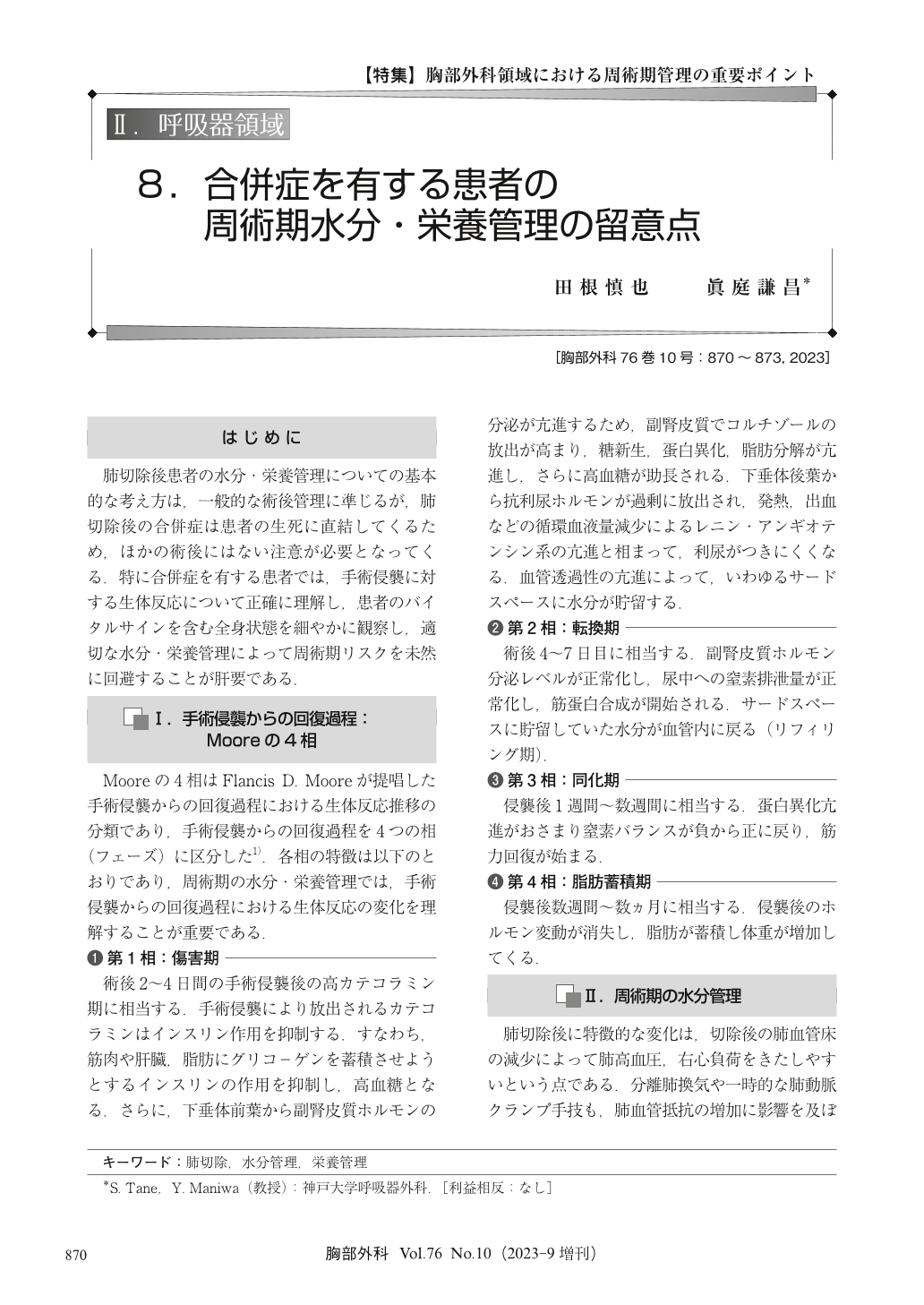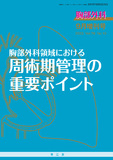Japanese
English
- 有料閲覧
- Abstract 文献概要
- 1ページ目 Look Inside
- 参考文献 Reference
肺切除後患者の水分・栄養管理についての基本的な考え方は,一般的な術後管理に準じるが,肺切除後の合併症は患者の生死に直結してくるため,ほかの術後にはない注意が必要となってくる.特に合併症を有する患者では,手術侵襲に対する生体反応について正確に理解し,患者のバイタルサインを含む全身状態を細やかに観察し,適切な水分・栄養管理によって周術期リスクを未然に回避することが肝要である.
The strategy for the administration of fluid and nutrition management after lung resection is not unusual, as compared to the other ordinal surgeries. However, it should be kept in mind that relative reduction in right ventricular function could occur following lung resection due to increased pulmonary vascular resistance. The surgical trauma such as pulmonary arterial clamp and lymphadenectomy as well as the removal of the lung, and perioperative factors such as single lung ventilation, could also increase pulmonary vascular resistance, all of which could be related to acute lung injury. Regarding the fluid management, excessive fluid administration could cause pulmonary edema, decreased alveolar gas permeability, atelectasis, and hypoxia, while restrictive fluid management could induce complication related to hypoperfusion. Since these adverse effects are highly associated with the main causes of morbidity and mortality particularly in the compromised patients, a proper assessment and monitoring of fluid balance (fluid optimization) would be required. In addition, along with the increasing number of the elderly patients, particular concerns must be given to the patients with the sarcopenia or frailty. The appropriate nutritional support following lung surgery is necessary to reduce surgical morbidity and morbidity especially for the malnourished and elderly patients.

© Nankodo Co., Ltd., 2023


